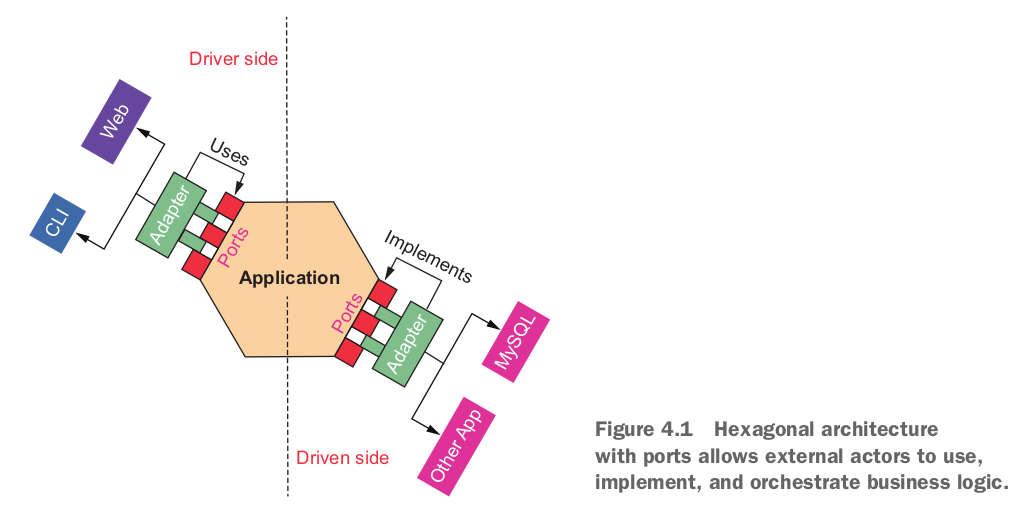Hexagonal architecture (https://alistair.cockburn.us/hexagonal-architecture/), proposed by Alistair Cockburn in 2005, is an architectural pattern that aims to build loosely coupled application components that can be connected via ports and adapters. In this pattern, the consumer opens the application at a port via an adapter, and the output is sent through a port to an adapter. Therefore, hexagonal architecture is also known as a ports and adapters system. Using ports and adapters creates an abstraction layer that isolates the application’s core from external dependencies.
Application
An application is a technology-agnostic component that contains the business logic that orchestrates functionalities or use cases. A hexagon represents the application that receives write and read queries from the ports and sends them to external actors,
such as database and third-party services, via ports. A hexagon visually represents multiple port/adapter combinations for an application and shows the difference between the left side (or driving side) and right side (or driven side).
Actors
Actors are designed to interact with humans, other applications, and any other software or hardware device. There are two types of actors: driver (or primary) and driven (or secondary). Driver actors are responsible for triggering communication with the application to invoke a service on it. Command-line interfaces (CLIs), controllers, are good examples of driver actors since they take user input and send it to the application via a port. Driven actors expect to see communication triggered by the application itself. For example, an application triggers a communication to save data into MySQL.
Ports
Ports are generally interfaces that contain information about interactions between an actor and an application. Driver ports have a set of actions, and actors should implement them. Driver ports contain a set of actions that the application provides and exposes to the public.
Adapters
Adapters deal primarily with transforming a request from an actor to an application, and vice versa. Data transformation helps the application understand the requests that come from actors. For example, a specific driver adapter can transform a technology-specific request into a call to an application service. In the same way, a driven adapter can convert a technology-agnostic request from the application into a technology-specific request on the driven port.
As you can see in figure 4.1, the application has a hexagon that contains business logic, and adapters can orchestrate the hexagon by using ports. CLI and web applications are two candidates for adapters; data is saved into MySQL or sent to another application.

Using gRPC makes implementing hexagonal architecture easier because we become familiar with adapters out of the box by using gRPC stubs to access other services. gRPC can also be used to handle business models with the help of proto messages, which is especially helpful for duplicating models between hexagonal layers for better portability.
- Microservice Architecture Hexagonalmicroservice architecture structure hexagonal microservice architecture hexagonal hexagonal microservice plugin-microservice microservice gateway api architecture microservice consistency data microservices microservice are what microservice resiliency patterns circuit